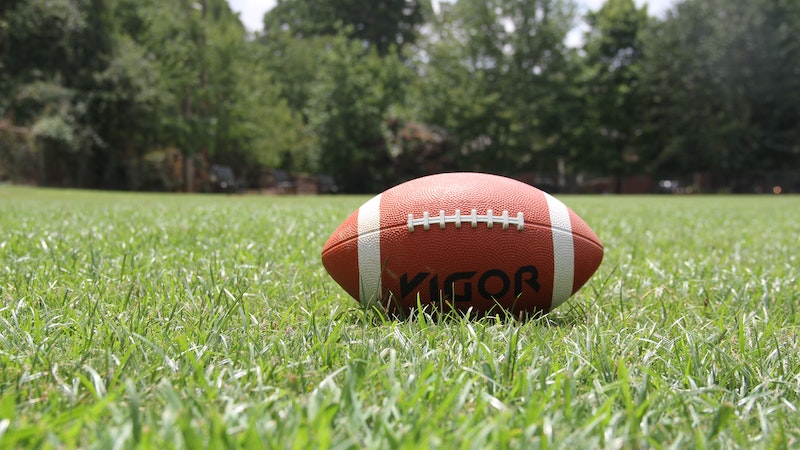The standard rugby ball size, designated as “Size 5,” is a critical component of the sport’s integrity and fairness. In the world of rugby, precision and consistency matter, and the Size 5 rugby ball’s specifications are meticulously governed by the regulations of World Rugby.
This iconic ball measures approximately 28 centimeters (11 inches) in length and boasts a circumference ranging from 58 to 60 centimeters (23 to 24 inches).
Weighing between 410 and 460 grams (14 to 16 ounces), it strikes the perfect balance between durability and playability. Understanding the standard size of a rugby ball is fundamental to appreciating the sport’s tradition, skill, and fierce competition.
What Size Is a Standard Rugby Ball?
The standard size for an adult rugby ball is known as “Size 5.” This site is used in international matches, professional leagues, and senior-level club rugby, and it adheres to specific dimensions to maintain uniformity across the sport.
The standard size of a rugby ball is crucial to ensure fair play and consistency in the sport, and it is governed by regulations set forth by World Rugby, the international governing body for the game.
A Size 5 rugby ball typically measures approximately 28 centimeters (11 inches) in length. It has a circumference ranging from 58 to 60 centimeters (23 to 24 inches).
This specific size is designed to strike a balance between ease of handling and kicking, making it suitable for players of all positions on the field.
The size and shape of the ball are carefully regulated to ensure that it can be easily grasped, carried, and passed by players while also being conducive to accurate and controlled kicking.
In terms of weight, a Size 5 rugby ball typically weighs between 410 and 460 grams (14 to 16 ounces). This weight range allows for a combination of durability and playability.
The ball needs to be robust enough to withstand the physical demands of the game, including tackles and scrums, while still being agile enough for players to control and maneuver.
The standardization of the rugby ball’s size is essential because it ensures a level playing field for teams and players.
Consistency in ball size and shape promotes fair competition and helps players develop their skills with a predictable and familiar tool.
Any deviations from the established Size 5 specifications can lead to unfair advantages or disadvantages for teams, which is why adherence to these standards is crucial in the sport of rugby.
Features of a Standard Rugby Ball

A standard rugby ball possesses several distinctive features that are essential for the game. These features are designed to facilitate handling, passing, kicking, and overall gameplay while ensuring durability and performance.
Here are the key features of a standard rugby ball:
Oval Shape
Rugby balls have an oval or ellipsoidal shape, which distinguishes them from the spherical shape of many other sports balls. This unique shape contributes to the unpredictable bouncing and rolling characteristics of the ball, adding an element of challenge and excitement to the game.
Size
A standard rugby ball adheres to specific size requirements defined by World Rugby. It typically has a circumference of approximately 58-62 centimeters (about 22.8-24.4 inches) and a length of around 28-30 centimeters (about 11-11.8 inches).
Material
Rugby balls are typically made of multiple layers of synthetic materials, including rubber, latex, and polyurethane. These materials provide durability, responsiveness, and a consistent feel to the ball.
Grip Texture
The outer surface of a rugby ball is covered with a textured material, such as dimples or raised patterns. This texture enhances a player’s grip on the ball, particularly in wet or muddy conditions, ensuring better ball control during passes and kicks.
Bladder
Inside the ball, there is an inflatable rubber bladder responsible for maintaining the ball’s shape and providing bounce. The bladder is inflated to the required pressure before a match to ensure consistent performance.
Weight
Although not specified by size regulations, standard rugby balls typically weigh around 410-460 grams (14.5-16.2 ounces). The weight contributes to the ball’s flight characteristics and handling, allowing players to make accurate passes and kicks.
Color
Rugby balls traditionally feature a distinctive color scheme with multiple solid panels, often in combinations of white, green, blue, or red. This design helps players and referees easily spot the ball during play.
Durability
Rugby balls are built to withstand the physical demands of the sport, including tackles, scrums, and being kicked at high speeds. They are designed to endure rough conditions and maintain their shape and performance throughout a match.
How Many Rugby Ball Sizes Are There?

In rugby, there are primarily three standard sizes for rugby balls, each designed for specific age groups and levels of play. These sizes are regulated by the sport’s governing bodies, such as World Rugby.
The three standard rugby ball sizes are:
Size 5
This is the standard size for adult rugby. Size 5 rugby balls are used in international matches, professional leagues, and senior-level club rugby.
As mentioned in the previous response, a size 5 rugby ball typically measures approximately 28 centimeters (11 inches) in length, has a circumference of around 58-60 centimeters (23-24 inches), and weighs about 410-460 grams (14-16 ounces).
Size 4
Size 4 rugby balls are commonly used in youth rugby and women’s rugby. These balls are slightly smaller and lighter than size 5 balls to suit the physical abilities of younger players and female athletes.
A size 4 rugby ball typically measures about 27 centimeters (10.6 inches) in length, has a circumference of approximately 56-58 centimeters (22-23 inches), and weighs around 350-380 grams (12-13.4 ounces).
Size 4 balls are used in age groups such as under-12, under-14, and under-16, as well as in women’s rugby matches.
Size 3
Size 3 rugby balls are designed for even younger players, typically in the under-8 and under-10 age groups.
These balls are smaller and lighter than size 4 and size 5 balls to better accommodate the skills and physical size of very young rugby enthusiasts.
The specific dimensions of a size 3 rugby ball may vary slightly among manufacturers, but it generally has a length of around 26 centimeters (10 inches), a circumference of approximately 54-56 centimeters (21-22 inches), and a weight of about 320-350 grams (11-12.3 ounces).
Rugby Ball Sizes by Age Group

Rugby ball sizes can vary by age group to accommodate the physical development and skill levels of different players.
Here are the typical rugby ball sizes for various age groups:
Under 6 (U6) to Under 9 (U9)
- Size: Mini or Size 3
- Description: These young players use smaller, lighter rugby balls (Size 3) to help them develop basic handling and kicking skills. The reduced size makes it easier for them to control the ball.
Under 10 (U10) to Under 12 (U12)
- Size: Midi or Size 4
- Description: As players progress in age and ability, they move up to Size 4 balls. These balls are slightly smaller than the standard Size 5 and are designed to bridge the gap between the smaller Size 3 balls used in younger age groups and the full-size balls used in adult rugby.
Under 13 (U13) and Older
- Size: Size 5 (Standard)
- Description: From U13 and onwards, players use the standard Size 5 rugby ball. This size is consistent with international rugby standards and is used in professional leagues and senior-level club rugby.
FAQS
Is there a standard rugby ball size for youth or junior players?
Yes, there are different sizes of rugby balls designated for youth and junior players.
Are there any specific regulations regarding the shape of a standard rugby ball?
Yes, there are regulations that dictate the shape of a rugby ball. It should be oval in shape to facilitate predictable handling, passing, and kicking while conforming to Size 5 dimensions.
Why is the weight range of a Size 5 rugby ball quite broad?
The weight range allows for some variation to accommodate different manufacturing processes and materials while ensuring that the ball remains within acceptable limits for play.
This flexibility ensures that slight variations in weight do not affect the ball’s performance significantly.
What are the key differences between a rugby union ball and a rugby league ball in terms of size?
While both rugby union and rugby league use Size 5 balls, there can be subtle differences in their shape and design.
Rugby league balls often have a more pronounced grip and may vary slightly in shape to suit the specific demands of the rugby league game.
Last Words
Understanding the standard size of a rugby ball, known as Size 5, is fundamental to appreciating the precision and consistency that underpin the sport of rugby.
This iconic ball, carefully regulated by World Rugby, is designed with specific dimensions to ensure uniformity and fair play in international matches, professional leagues, and senior-level club rugby.
Its approximately 28-centimeter length, 58-60-centimeter circumference, and weight between 410 and 460 grams strike a delicate balance between durability and playability.
The Size 5 rugby ball represents more than just equipment; it symbolizes the rich tradition, skill, and competitive spirit of the game, uniting players and fans around the world in their love for rugby.







